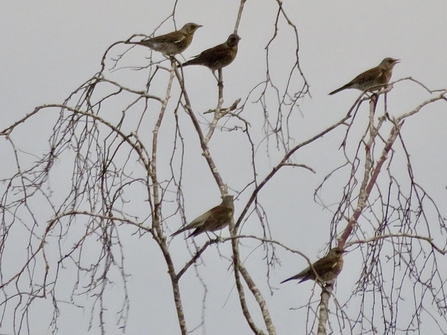At this time of year, I miss being able to go to some favourite places as often as I’d like. The shorter days mean less opportunity for outdoor time, unless we can dodge showers or get out earlier in the mornings. Our last walk was a couple of weekends ago, when I ‘wheely walked’ the canal path from Morris’s Bridge to the Mammoth viewing platform with hubby. The damp ground meant I collected leaves, mud and gravel, in the wheels of my chair, and the cuffs of my coat were a muddy mess too.
Barriers to nature
However, the natural surroundings always boost my physical and mental well-being. Those few hours spent outdoors are like pressing the pause and reset button. The sounds, sights, smells, textures, and physical exertion all feed into my body, and the natural healing benefits stay with me for a couple of days afterwards.
For some people getting out of the house is the biggest achievement of their day. Using a wheelchair or mobility aid, or anything that affects your ability to access the outdoors, can be a massive hurdle to overcome. Mentally and physically it can be exhausting to plan for these trips out. On a wet and chilly winter’s day, it is much easier to stay home. A day inside is easier to enjoy if I have been out the day before. It helps me personally, to plan ahead a little and make lists of places I’d like to explore. Nature can be appreciated through our windows and in our gardens, but, for me there is nothing that matches the benefits I get from being totally immersed in the beautiful environment of nature reserves.
I’m lucky to have transport and a job that I love. I have the opportunity and support, from human and metal mobility aids, to leave the house easily and love being with my family and friends-meeting new people. My motivation comes from these relationships and they help me feel valued, inspired, and mentally healthy.
The hidden hazards outdoors, invisible to most and the lack of simple inexpensive adaptations, restrict many of us, even before Covid. It is so much harder, if not virtually impossible, for people to be connected with our environment when access, information and opportunity to visit these wonderful sites is not always in place. I’m hoping to be part of the change necessary to help more people access the many benefits our Wildlife Trusts have to offer.

On the day we spent at the mosses, we met a number of passionate bird watchers. Cameras on tripods and binoculars set up to photograph a rare visitor to the mosses; the Grey Phalarope. We didn’t get a glimpse but did have a bit of camera envy! We heard the rustling of little creatures in the undergrowth and spotted Fieldfare for the first time. The sun was low, dusk approached, and the stunning reflections were perfect for photographs. We’re planning a visit again soon, and hoping to capture a Starling murmuration over the mosses, before winter sets in.

